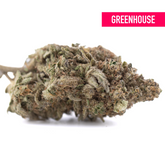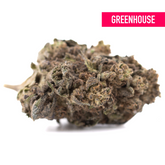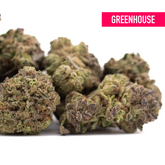THCA Trim: How to Use Leftover Hemp Trim Effectively
When cultivating hemp or cannabis, the trimming process inevitably produces leftover plant material that many cultivators consider waste. However, this THCA trim contains valuable cannabinoids and terpenes that can be repurposed for various applications. Understanding how to effectively utilize leftover hemp trim can maximize your investment and provide cost-effective alternatives to premium flower products.
Understanding THCA Trim and Its Value
THCA trim consists of the sugar leaves, fan leaves, and small buds removed during the manicuring process of hemp flowers. While these materials don't have the bag appeal of full-sized buds, they retain significant concentrations of tetrahydrocannabinolic acid (THCA) and other beneficial compounds. The sugar leaves, in particular, are covered with trichomes containing these valuable cannabinoids, making them far from worthless byproducts.
The potency of hemp trim varies depending on the strain, growing conditions, and harvesting practices. Typically, trim contains between 5-15% cannabinoid content, significantly lower than premium flower but still substantial enough for various applications. This makes it an economical choice for consumers seeking therapeutic benefits without the premium price tag associated with top-shelf buds.
Many cultivators and processors sell their trim rather than discarding it, creating opportunities for savvy consumers to access cannabinoid-rich material at fraction of the cost. Whether you're interested in making your own extracts, preparing edibles, or simply seeking budget-friendly smoking material, understanding trim's potential can lead to significant savings.
Bulk Purchasing Options and Considerations
For those looking to maximize value, purchasing THCA trim bulk quantities offers substantial cost savings. Many suppliers offer bulk THCA trim in various quantities, from quarter-pounds to commercial-scale orders. When considering bulk purchases, several factors should influence your decision-making process.
Quality assessment becomes crucial when buying larger quantities. Reputable suppliers should provide detailed information about cannabinoid profiles, moisture content, and testing results. Visual inspection, when possible, can help identify fresh trim with intact trichomes versus degraded material that may have lost potency during storage.
Storage considerations become paramount with bulk purchases. Proper storage in airtight containers, away from light and moisture, helps preserve cannabinoid content and prevents mold development. Consider your intended use timeline when determining purchase quantities, as trim quality degrades faster than cured flower.
Pricing structures for THCA trim pound quantities typically offer significant per-unit savings compared to smaller purchases. Many suppliers offer tiered pricing, with THCA trim pounds available at wholesale rates for qualified buyers. Understanding these pricing structures helps determine the most cost-effective purchasing approach for your specific needs.
Primary Applications for THCA Trim
Concentrate Production
One of the most popular applications for THCA flower trim involves creating concentrates through various extraction methods. The lower cannabinoid density of trim actually makes it ideal for learning extraction techniques without risking expensive flower material.
Solvent-based extractions using butane, propane, or ethanol can effectively extract cannabinoids from trim material. The key lies in understanding that trim requires different processing parameters than flower due to its different moisture content and density. Longer extraction times and adjusted solvent ratios often produce better yields from trim material.
Rosin pressing represents another popular extraction method, though trim typically requires pre-processing to achieve optimal results. Creating trim-based bubble hash first, then pressing that hash into rosin, often produces higher quality concentrates than pressing raw trim directly. This two-step process maximizes cannabinoid recovery while improving final product consistency.
Ice water hash production works exceptionally well with trim material. The agitation process effectively separates trichomes from plant matter, and trim's smaller particle size can actually facilitate more efficient separation compared to whole buds. Many commercial hash producers specifically seek out trim for this application due to its cost-effectiveness and processing efficiency.
Edible Production
THCA trim and shake excel in edible applications where the final product's appearance matters less than its potency. The decarboxylation process converts THCA into THC, making trim suitable for creating various infused products.
Cannabutter production using trim follows similar processes to flower-based preparations but requires attention to different ratios. Trim's lower potency means using larger quantities to achieve desired effects, but its lower cost often makes this economically viable. Slow-cooking methods help maximize extraction efficiency while preventing degradation of heat-sensitive compounds.
Oil infusions work particularly well with trim material. Coconut oil, olive oil, and MCT oil all serve as effective carriers for cannabinoids extracted from trim. The key lies in maintaining proper temperatures during infusion and allowing sufficient time for complete extraction. Strain selection can significantly impact flavor profiles in finished products.
Alcohol-based tinctures represent another effective application for trim material. The alcohol extraction process efficiently pulls cannabinoids from plant matter, and trim's smaller particle size can actually improve extraction efficiency. These tinctures can be used directly or incorporated into various edible preparations.
Budget-Friendly Smoking Options
For consumers seeking affordable smoking material, THCA shake and trim provide viable alternatives to premium flower. While the experience differs from smoking top-shelf buds, proper preparation and realistic expectations can lead to satisfactory results.
Pre-roll production using trim requires careful preparation to ensure even burning and adequate potency. Mixing trim with small amounts of flower can improve burn characteristics while maintaining cost-effectiveness. Proper grinding and moisture control become crucial for achieving consistent results.
Joint and blunt preparation using trim benefits from attention to particle size and moisture content. Overly dry trim burns too quickly, while excessive moisture prevents proper ignition. Finding the optimal balance often requires experimentation with different preparation methods.
Vaporization represents an excellent consumption method for trim material. The controlled temperature delivery maximizes cannabinoid extraction while minimizing combustion byproducts. Many users find that trim vaporizes more effectively than it smokes, providing better value for the investment.
Shopping Strategies and Quality Assessment
When searching for quality THCA trim for sale, several factors help identify superior products. Visual inspection should reveal intact trichomes, minimal stem content, and appropriate moisture levels. Fresh trim should retain some of the original flower's aroma, indicating preserved terpene content.
Laboratory testing results provide crucial information about cannabinoid profiles, pesticide residues, and microbial contamination. Reputable suppliers should readily provide current test results for their trim products. Pay particular attention to total cannabinoid content, as this directly impacts the material's value for your intended applications.
Packaging and storage practices significantly impact trim quality. Products stored in airtight containers away from light typically maintain better potency than those exposed to degrading conditions. Vacuum-sealed packaging often indicates professional handling and storage practices.
Supplier reputation plays a crucial role in ensuring consistent quality and reliable service. Research potential suppliers through online reviews, industry forums, and direct communication. Established suppliers often provide better customer service and more consistent product quality than newer or less established vendors.
Processing Techniques and Best Practices
Preparation Methods
Proper preparation significantly impacts the effectiveness of trim-based products. Initial sorting helps remove excess stem material and identify the highest-quality portions for specific applications. This sorting process, while time-intensive, can substantially improve final product quality.
Grinding techniques require different approaches than those used for flower. Trim's varied particle sizes and moisture content necessitate careful attention to grinding consistency. Over-grinding can create powder that burns too quickly, while under-grinding may result in uneven extraction or burning.
Moisture control becomes particularly important when working with trim. Slightly rehydrating overly dry trim can improve processing characteristics, while reducing moisture in overly wet material prevents mold development during storage. Boveda packs or similar humidity control products help maintain optimal moisture levels.
Decarboxylation processes for trim material require adjusted time and temperature parameters compared to flower. The increased surface area and different moisture content can accelerate the decarboxylation process, requiring careful monitoring to prevent over-processing and cannabinoid degradation.
Extraction Optimization
Maximizing extraction efficiency from trim requires understanding its unique characteristics. The higher leaf-to-bud ratio means different terpene profiles and potentially different optimal extraction parameters. Experimentation with different methods helps identify the most effective approaches for specific trim types.
Solvent selection impacts both extraction efficiency and final product characteristics. Different solvents extract different compound profiles, and trim's composition may respond better to certain solvents than others. Understanding these relationships helps optimize extraction processes.
Temperature control during extraction becomes crucial for preserving heat-sensitive compounds. Trim's different thermal properties compared to flower may require adjusted processing temperatures to achieve optimal results without degrading valuable compounds.
Yield optimization often involves combining multiple extraction methods or processing trim in stages. Initial alcohol extraction followed by secondary processing of remaining material can maximize total cannabinoid recovery while producing different product types from the same starting material.
Storage and Preservation Strategies
Proper storage extends trim's useful life and maintains its cannabinoid content. Airtight containers prevent oxidation and moisture loss while protecting against contamination. Glass jars with tight-fitting lids provide excellent storage for smaller quantities, while vacuum-sealed bags work well for larger amounts.
Temperature control during storage helps preserve cannabinoid and terpene content. Cool, stable temperatures prevent degradation while avoiding the condensation problems associated with freezing. Many processors recommend storage temperatures between 60-70°F for optimal preservation.
Light protection prevents photodegradation of cannabinoids and helps maintain product quality over time. Dark storage containers or storage in dark environments help preserve potency and prevent the development of off-flavors associated with light exposure.
Humidity control prevents both mold development and excessive drying. Maintaining relative humidity between 55-65% helps preserve trim quality while preventing contamination. Humidity monitoring and control systems become worthwhile investments for larger storage operations.
Economic Considerations and Market Dynamics
The trim market operates on different economic principles than the premium flower market. Pricing typically reflects cannabinoid content, availability, and processing requirements rather than appearance or bag appeal. Understanding these market dynamics helps buyers make informed purchasing decisions.
Seasonal availability affects both pricing and quality. Harvest seasons typically bring increased availability and lower prices, while off-seasons may see reduced selection and higher costs. Planning purchases around harvest cycles can provide significant cost savings.
Regional variations in pricing and availability reflect different regulatory environments, cultivation practices, and market maturity. Understanding local market conditions helps identify the best sources and pricing for trim products.
Quality premiums exist even within the trim market. Premium trim from high-quality cultivators commands higher prices but often provides better yields and superior final products. Balancing cost considerations with quality requirements helps optimize purchasing decisions.
Legal and Regulatory Considerations
Hemp trim exists within the same regulatory framework as other hemp products, but specific regulations may vary by jurisdiction. Understanding local laws regarding possession, processing, and distribution helps ensure compliance with applicable regulations.
Testing requirements for trim products vary by location and intended use. Some jurisdictions require the same testing standards for trim as for flower, while others have different requirements. Understanding these requirements helps ensure regulatory compliance.
Transportation and storage regulations may apply differently to trim products compared to finished flower. Some jurisdictions classify trim differently for regulatory purposes, potentially affecting legal requirements for handling and storage.
Documentation requirements for trim purchases and processing may differ from those for flower products. Maintaining proper records helps ensure compliance and provides protection in case of regulatory scrutiny.
Future Trends and Market Development
The trim market continues evolving as the hemp industry matures. Increased processing efficiency and new extraction technologies are expanding the potential applications for trim material. These developments suggest growing demand and potentially higher prices for quality trim in the future.
Standardization efforts within the industry are beginning to address trim quality and grading standards. These developments should improve market transparency and help buyers make more informed decisions about trim purchases.
Consumer education about trim's potential is expanding its market beyond traditional concentrate producers. As more consumers understand trim's versatility and value, demand may increase, potentially affecting pricing and availability.
Technological advances in processing equipment designed specifically for trim are improving extraction efficiency and product quality. These developments make trim processing more accessible to smaller operators and individual consumers.
Conclusion
THCA trim represents a valuable resource that extends far beyond its perception as waste material. Through proper understanding of its characteristics, applications, and processing techniques, consumers can access significant value while reducing waste in the hemp industry. Whether your interest lies in concentrate production, edible manufacturing, or budget-friendly consumption options, trim provides versatile and cost-effective solutions.
The key to successfully utilizing hemp trim lies in understanding its unique properties and matching processing techniques to intended applications. Quality assessment, proper storage, and appropriate preparation methods all contribute to maximizing the value derived from these materials.
As the hemp industry continues maturing, the trim market will likely become increasingly sophisticated, with better quality standards, more consistent availability, and expanding applications. Consumers who develop expertise in working with trim today position themselves to benefit from these market developments while accessing current cost savings and quality products.
The versatility and value proposition of THCA trim make it an excellent option for both newcomers to hemp processing and experienced consumers seeking cost-effective alternatives. By applying the techniques and considerations outlined in this guide, users can effectively transform leftover hemp trim into valuable products that meet their specific needs and preferences.













